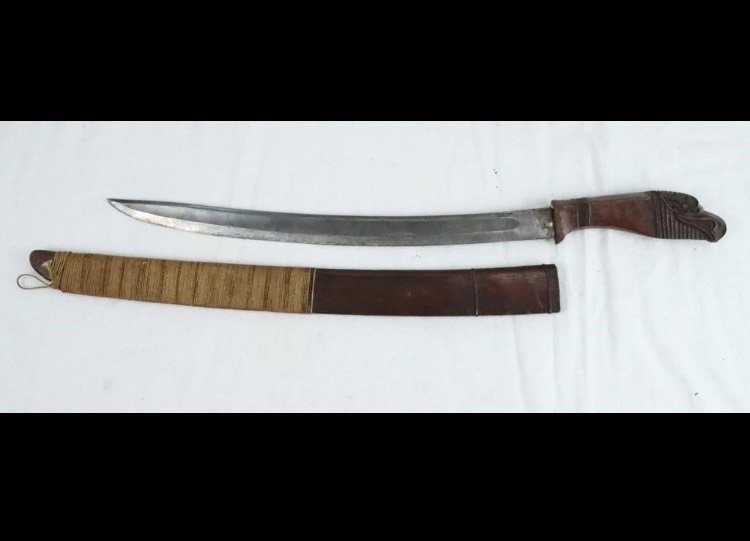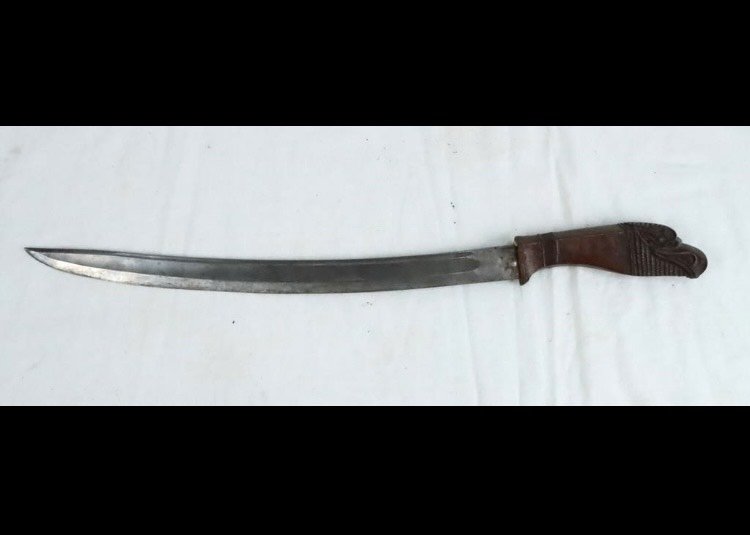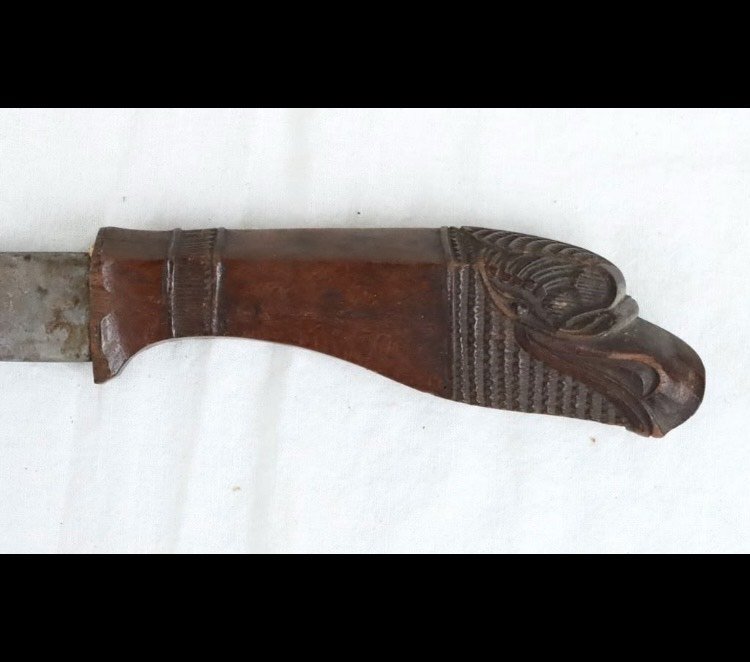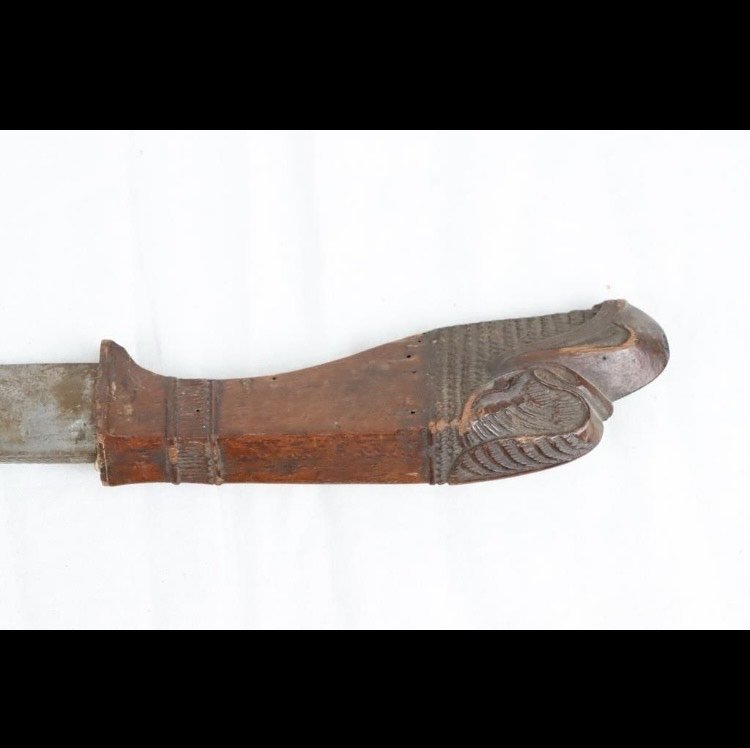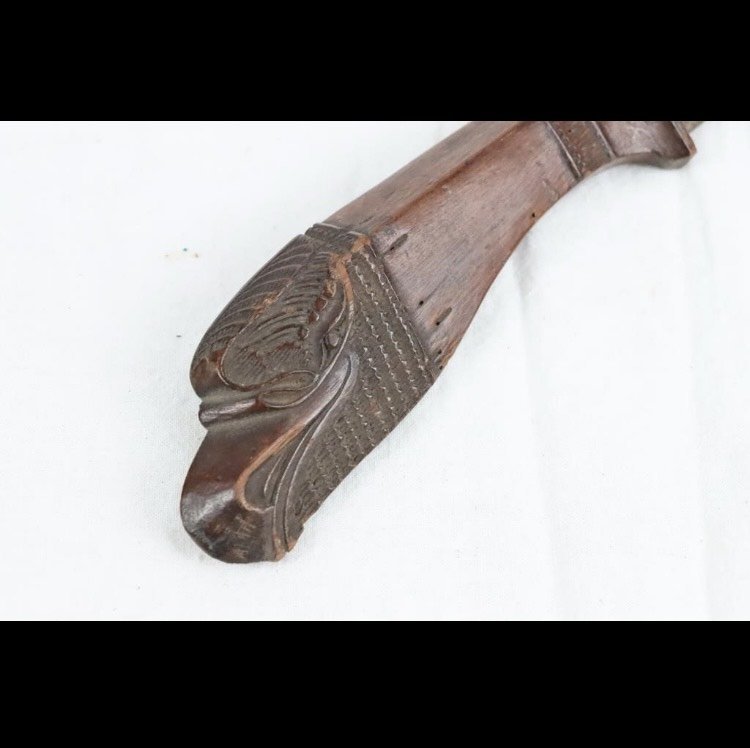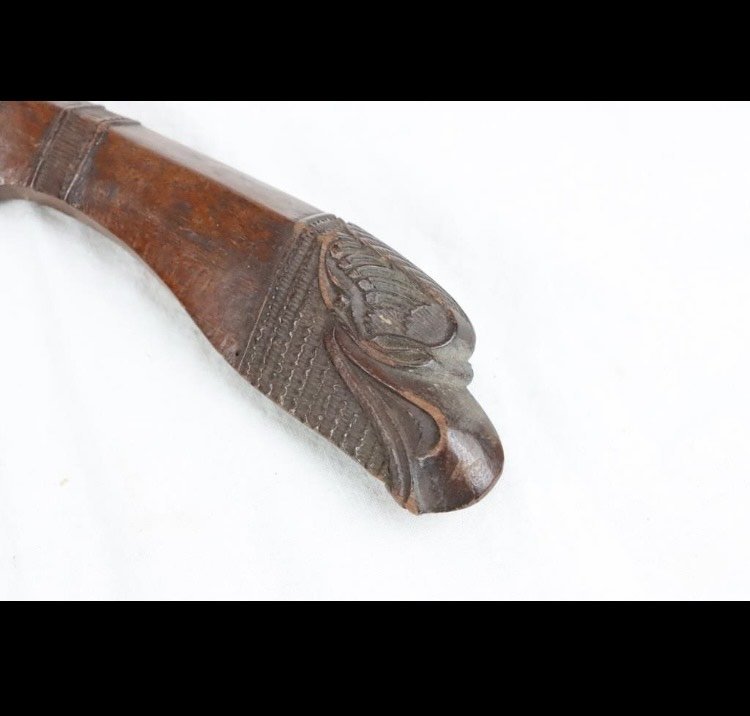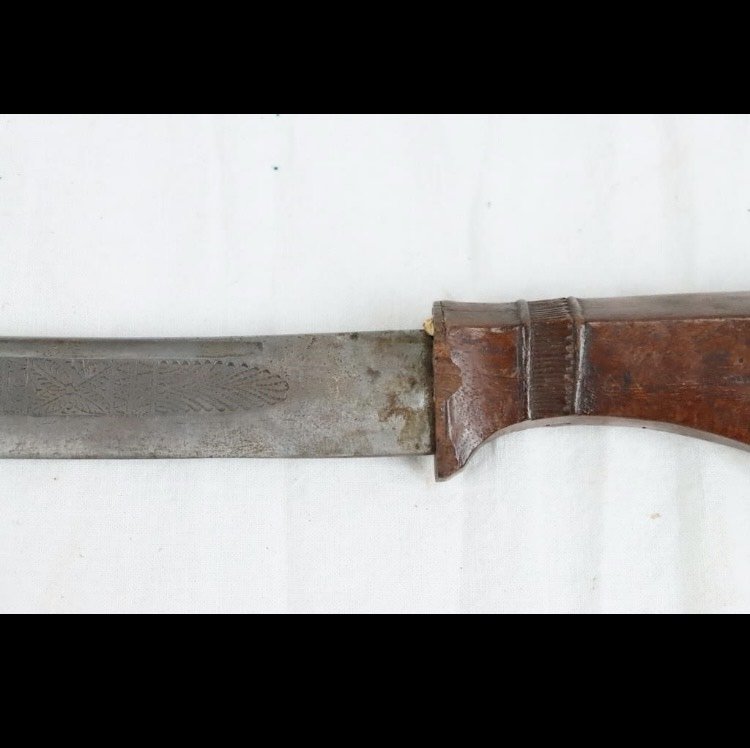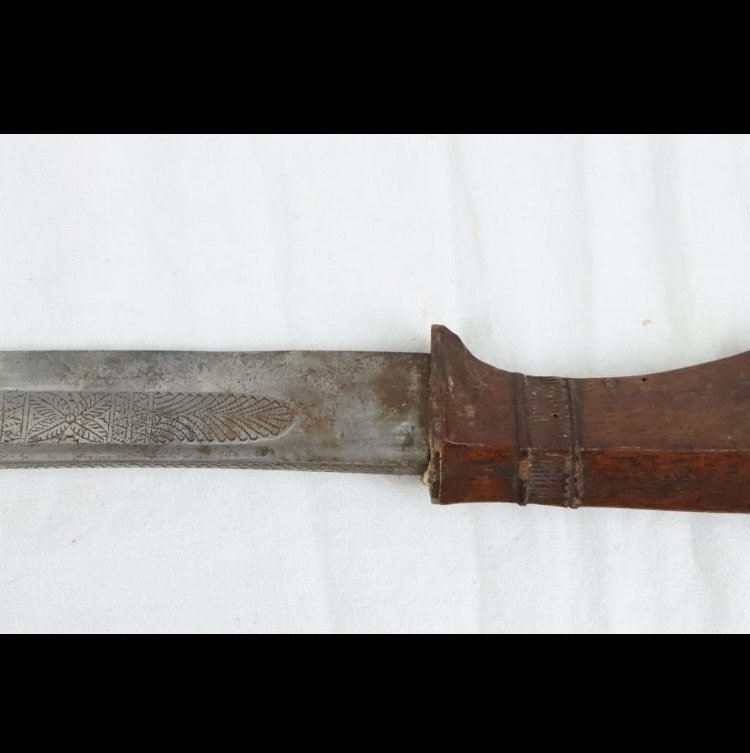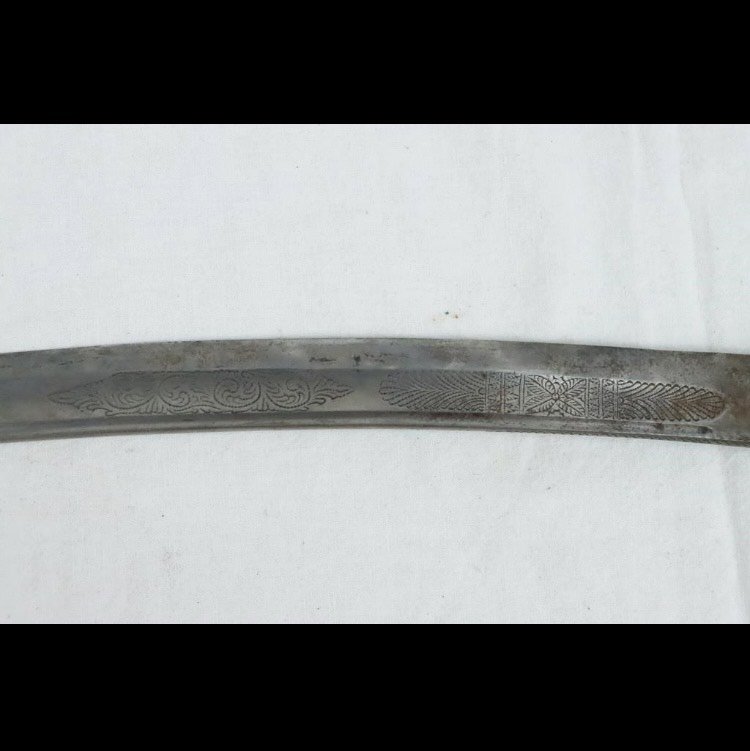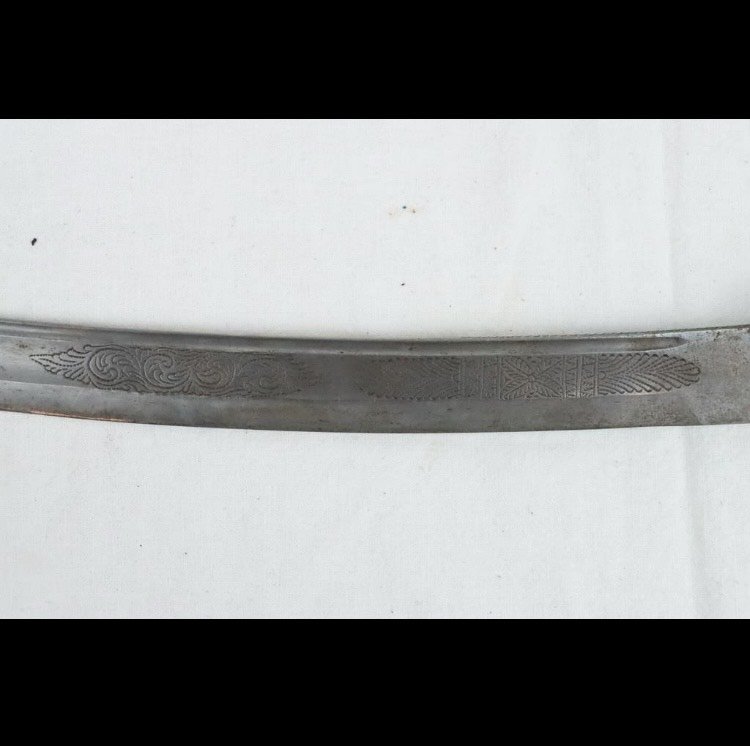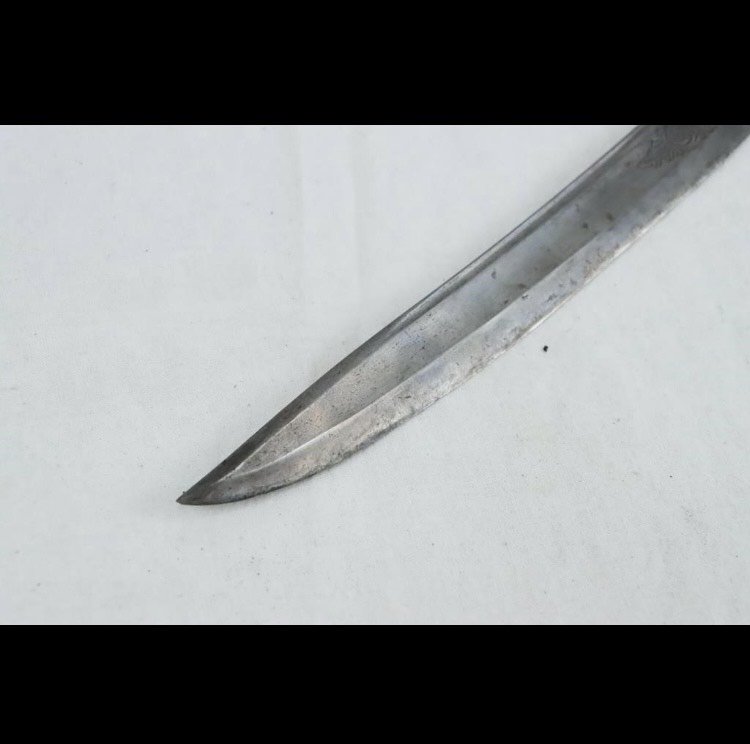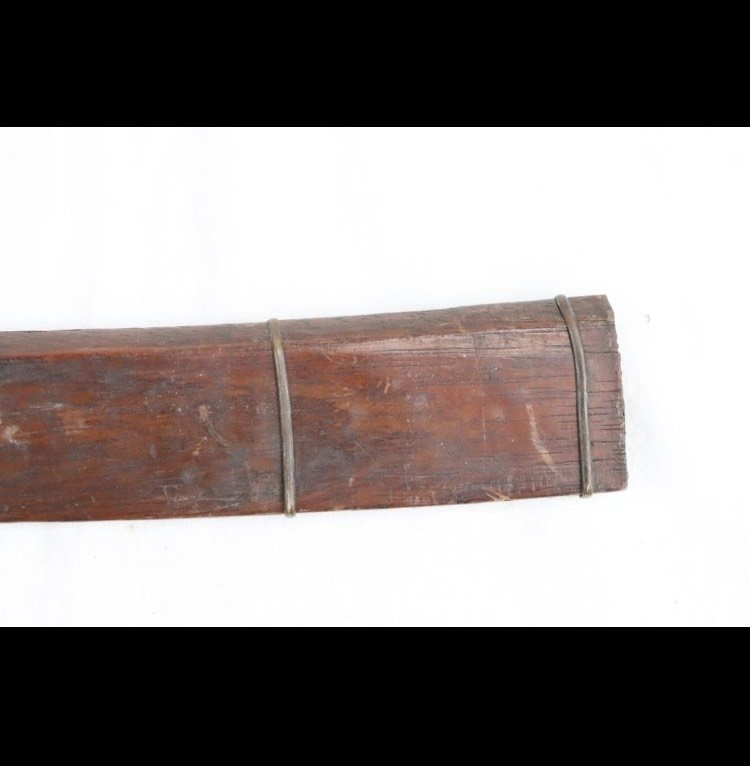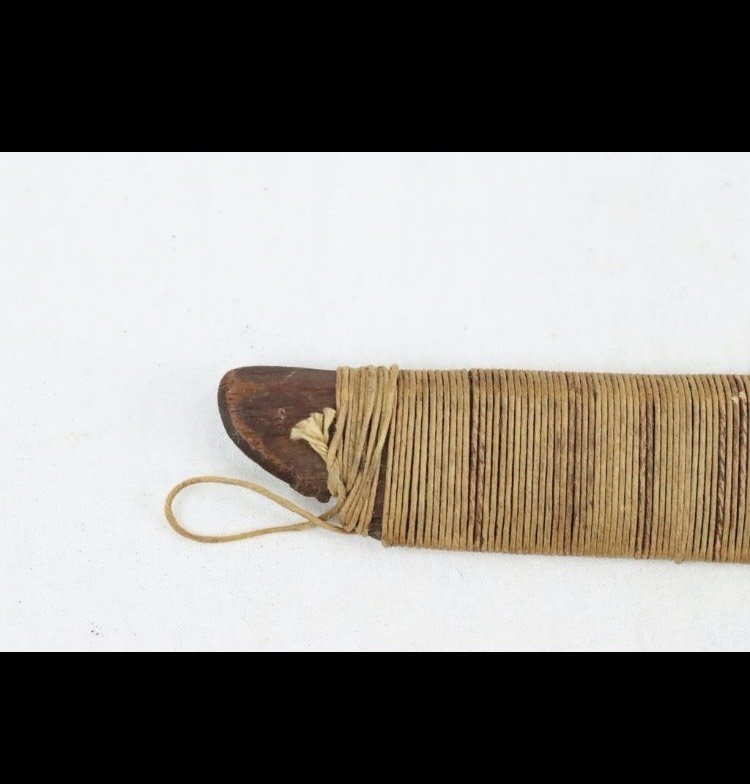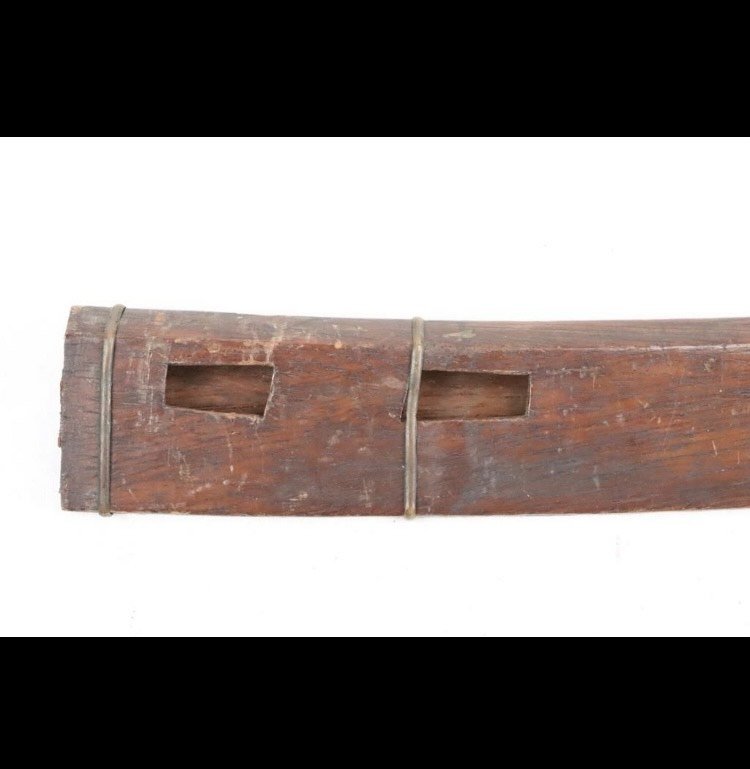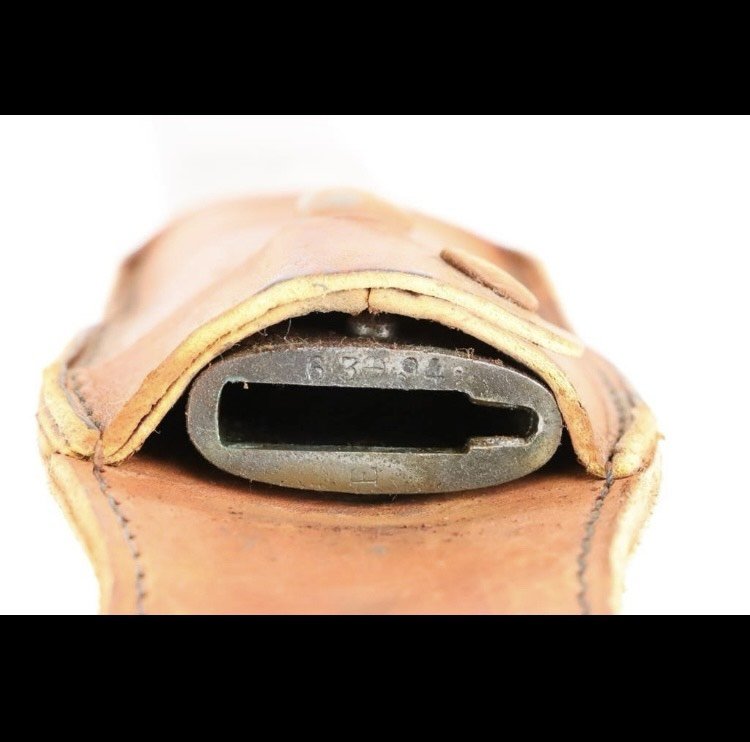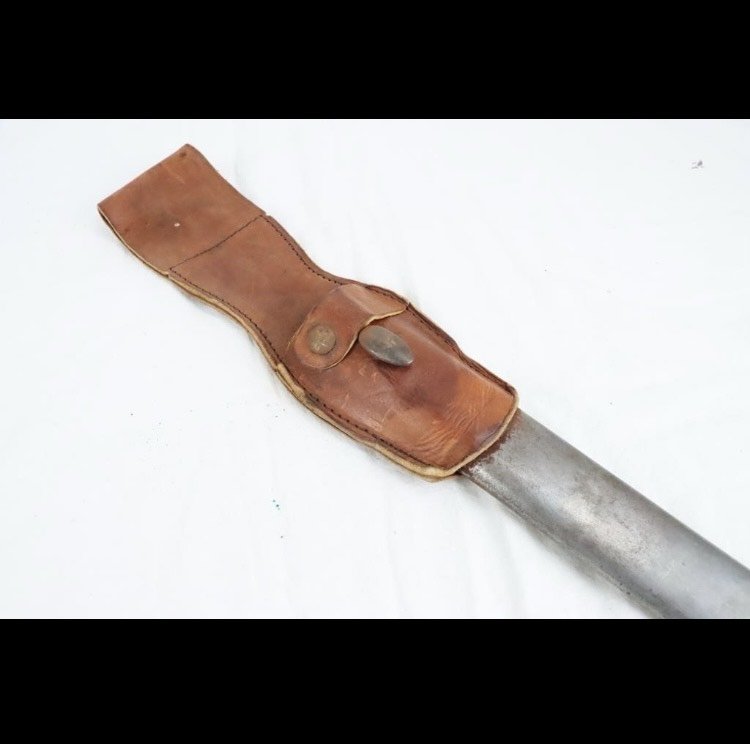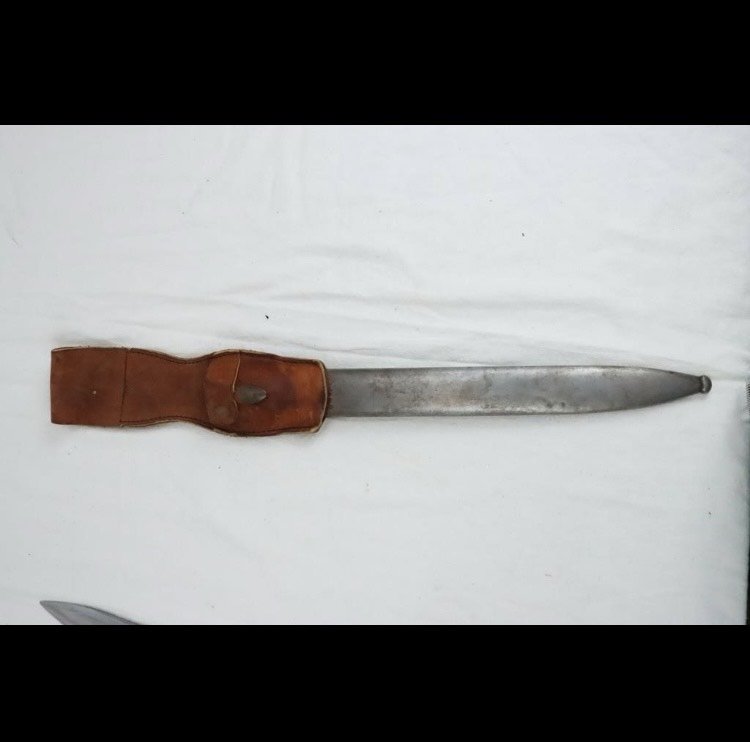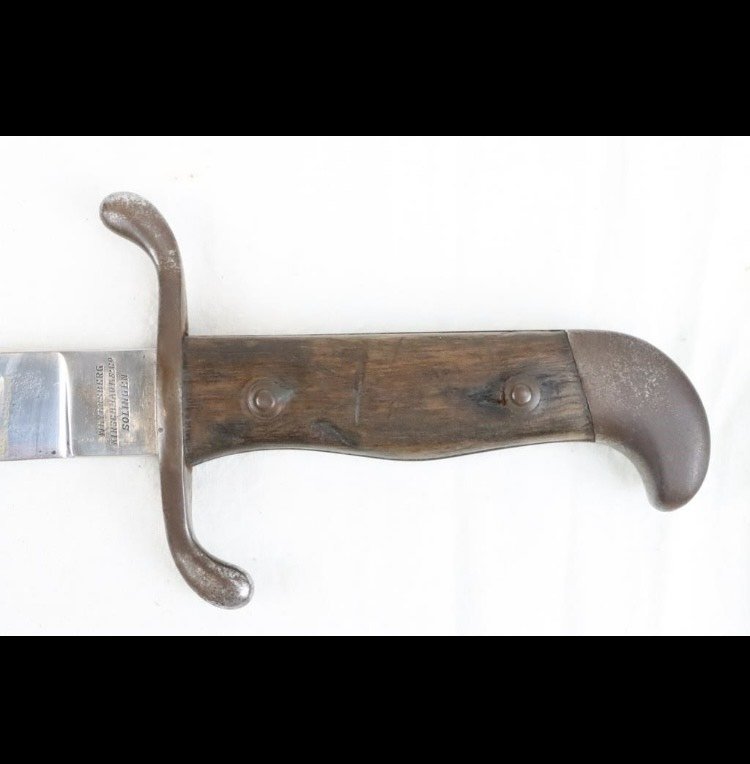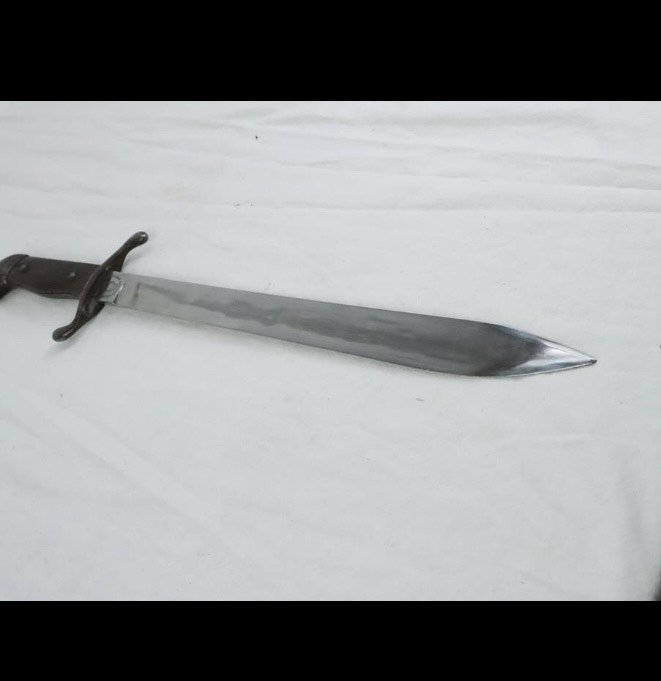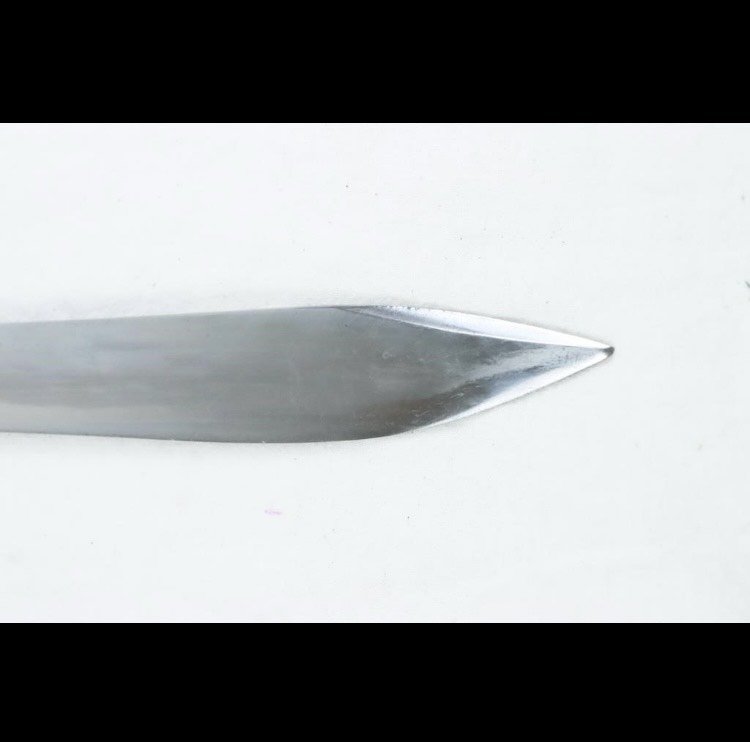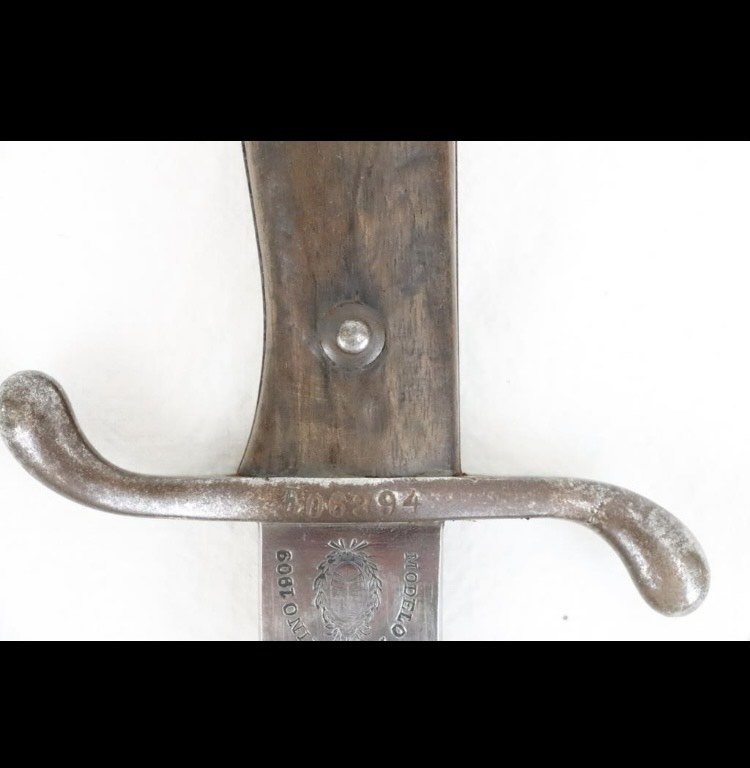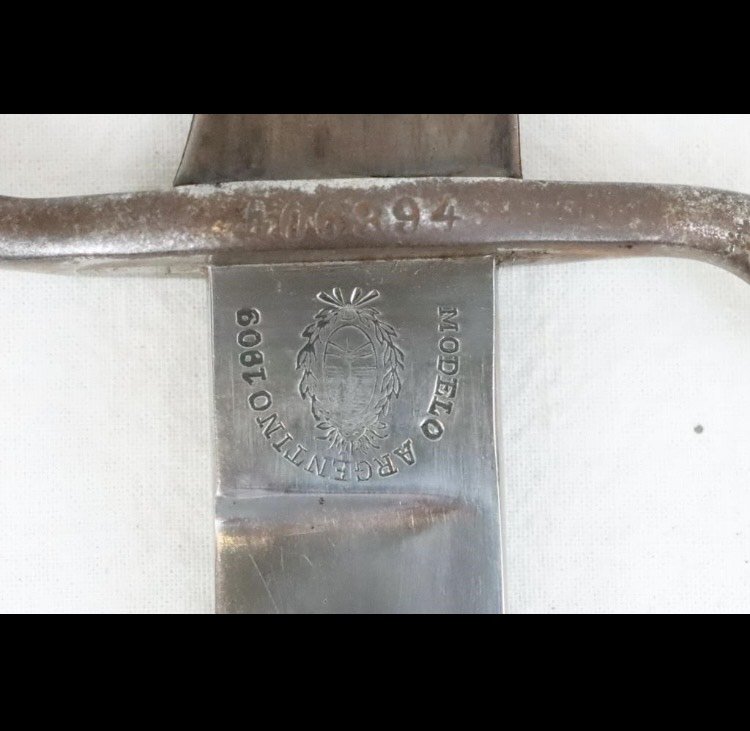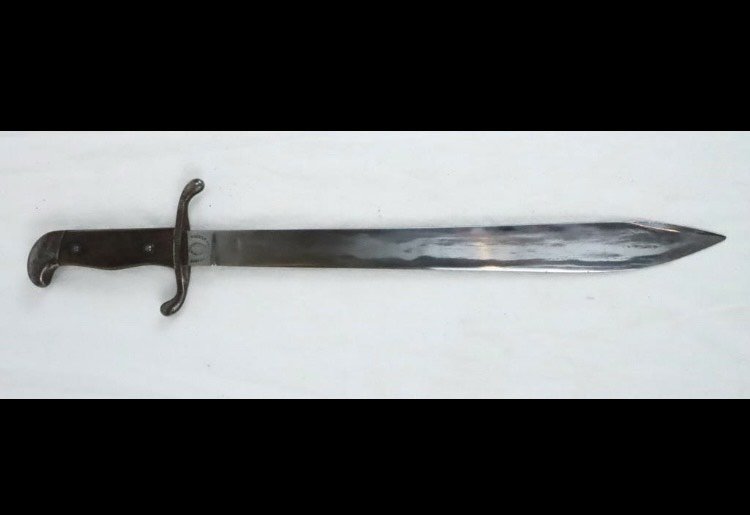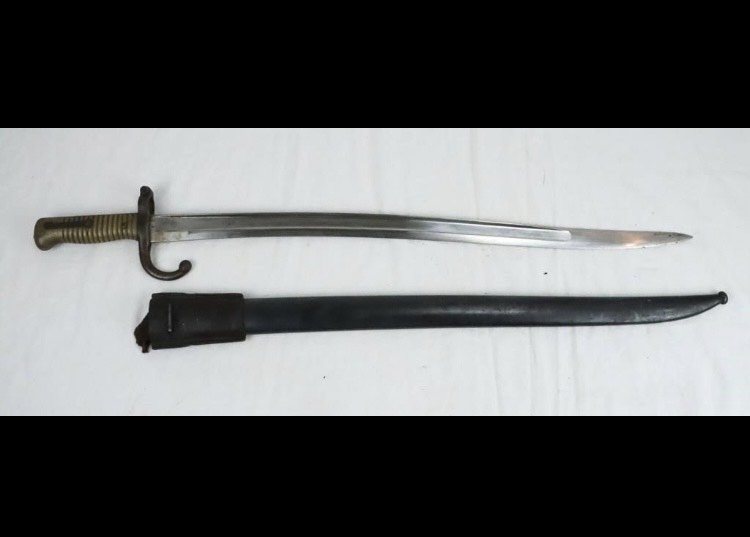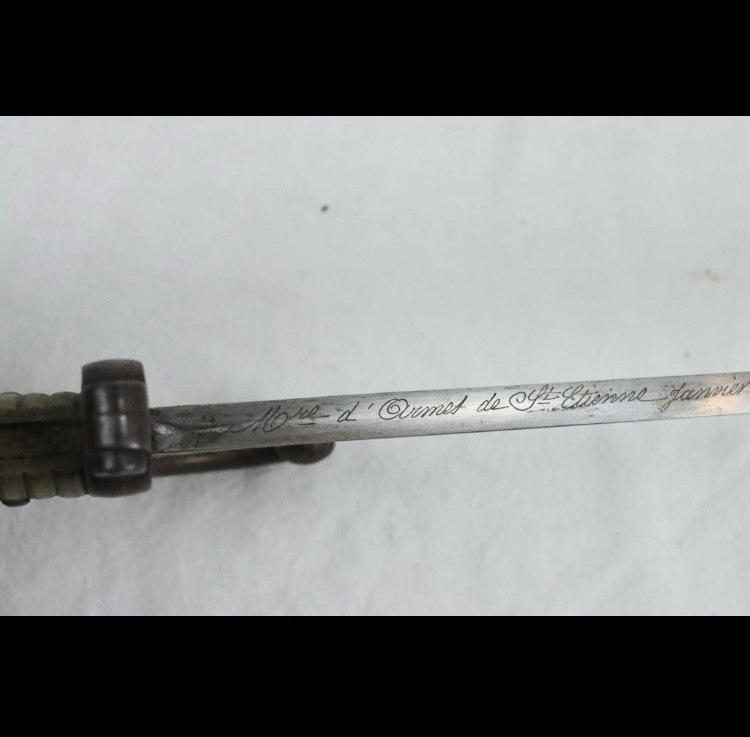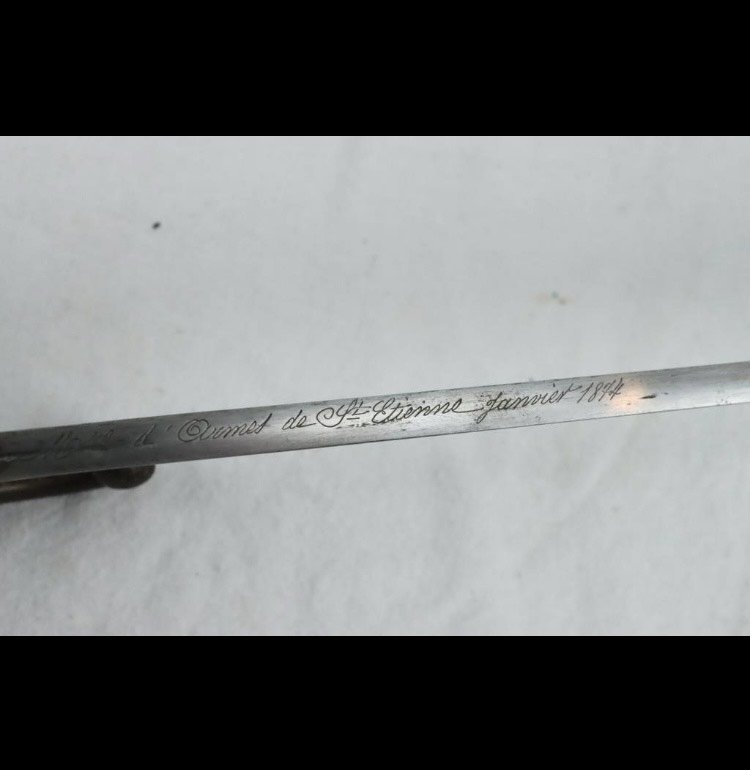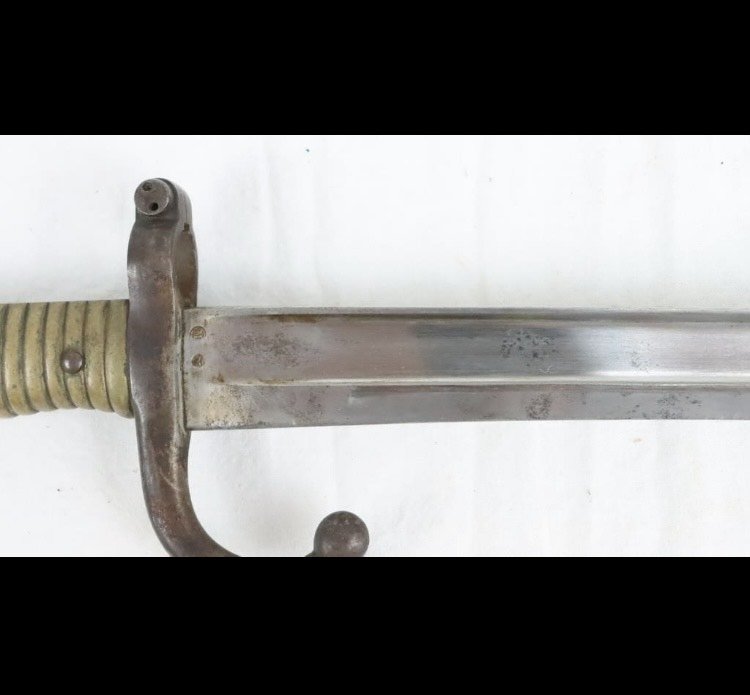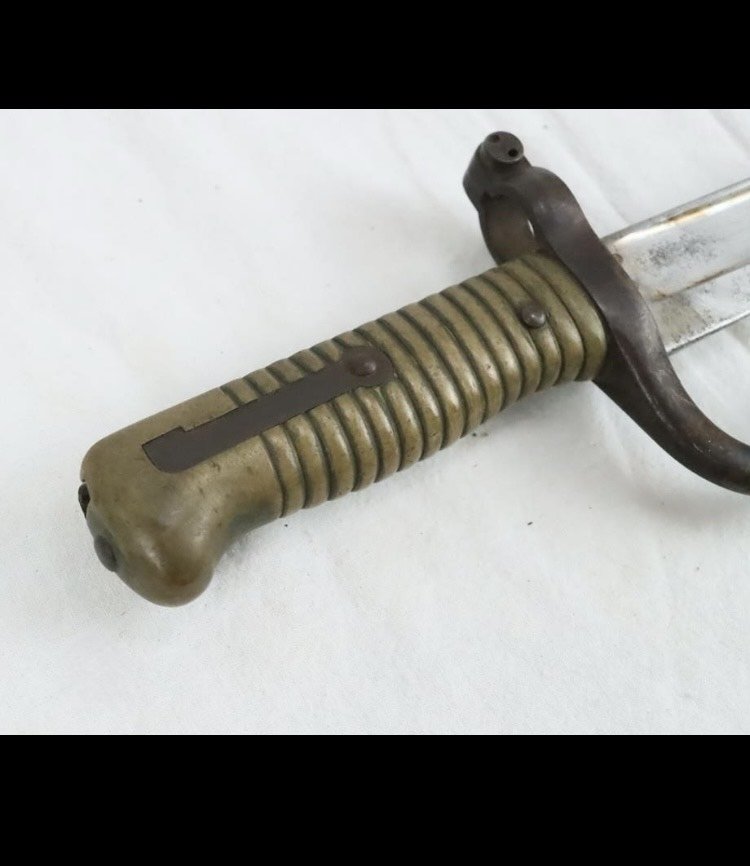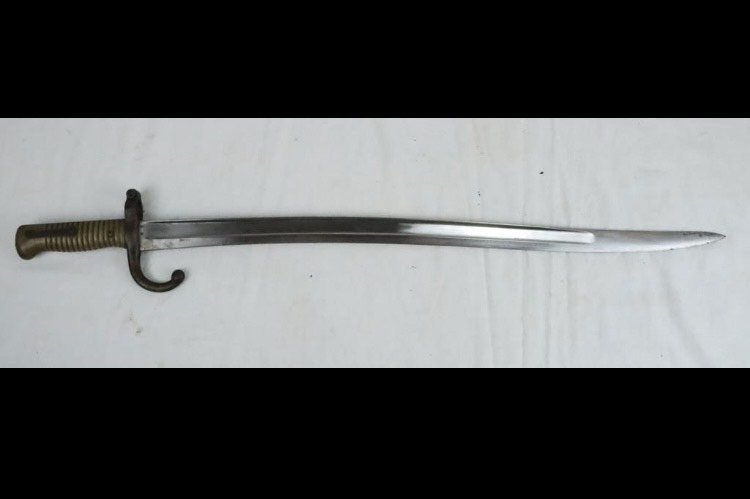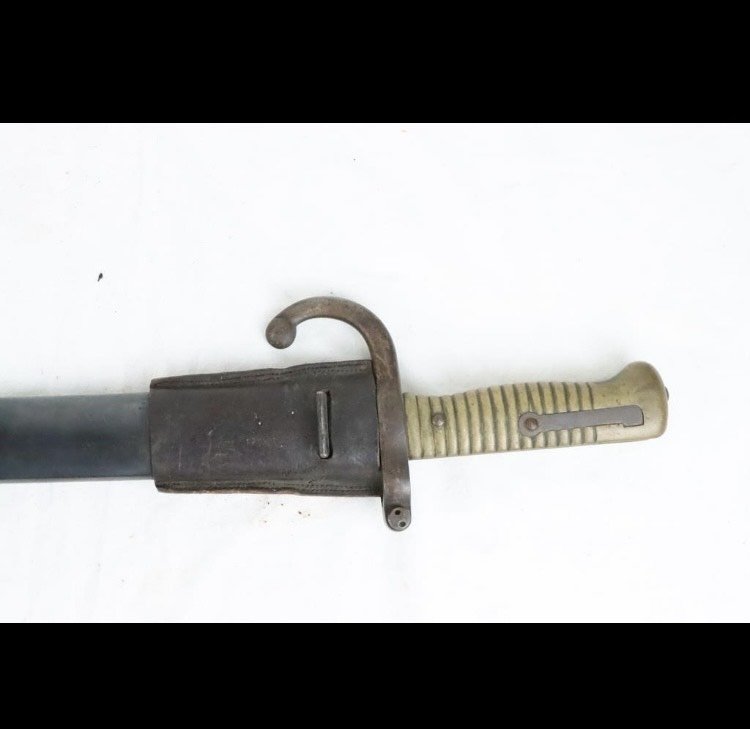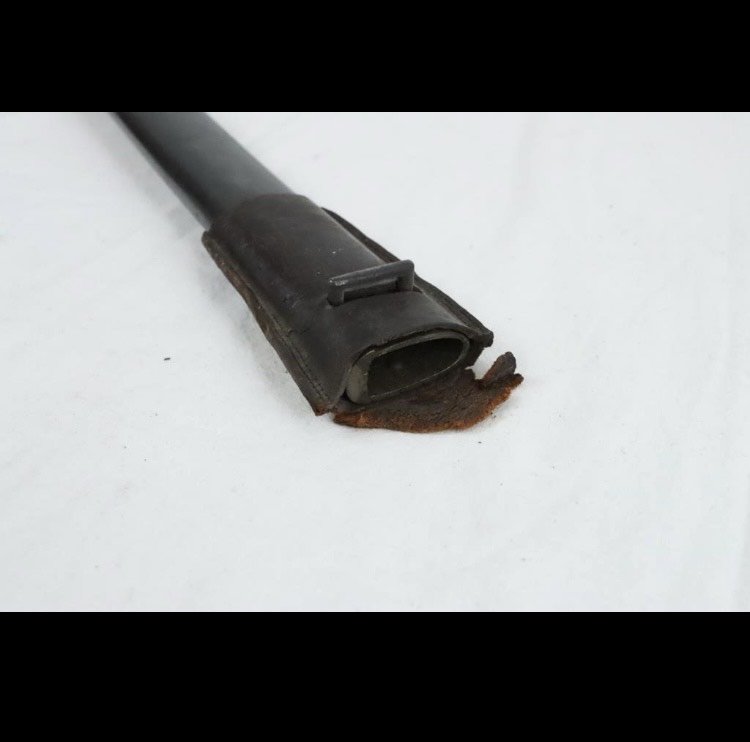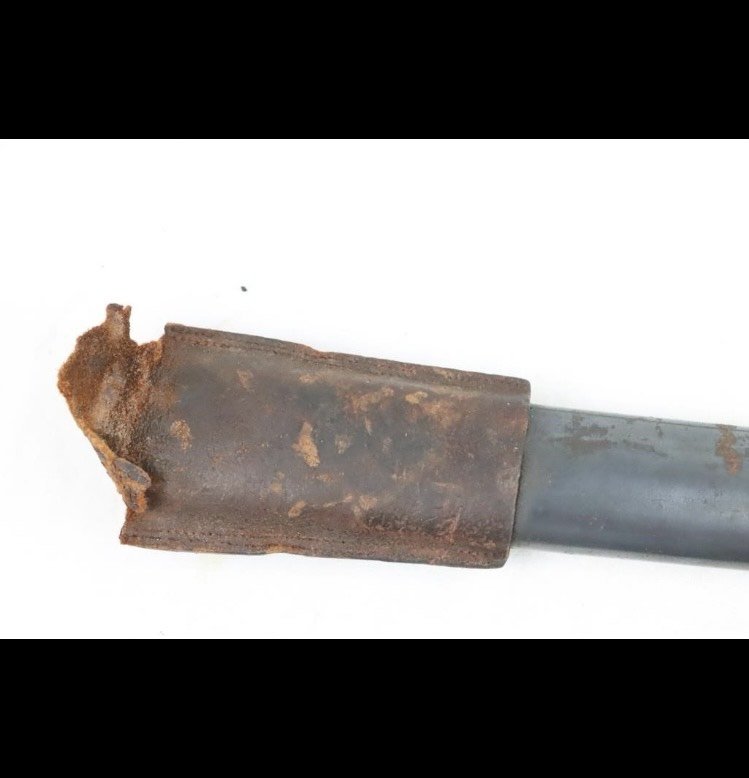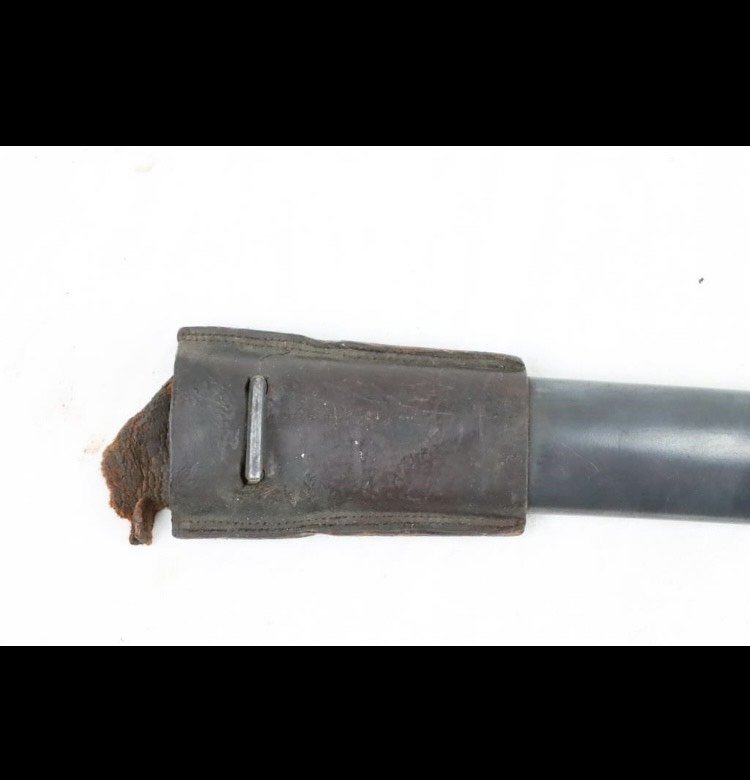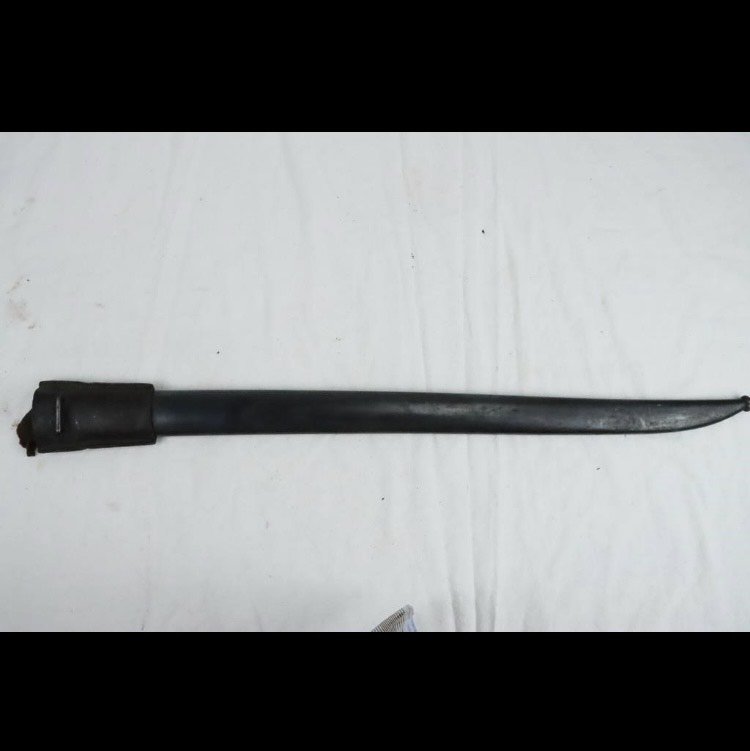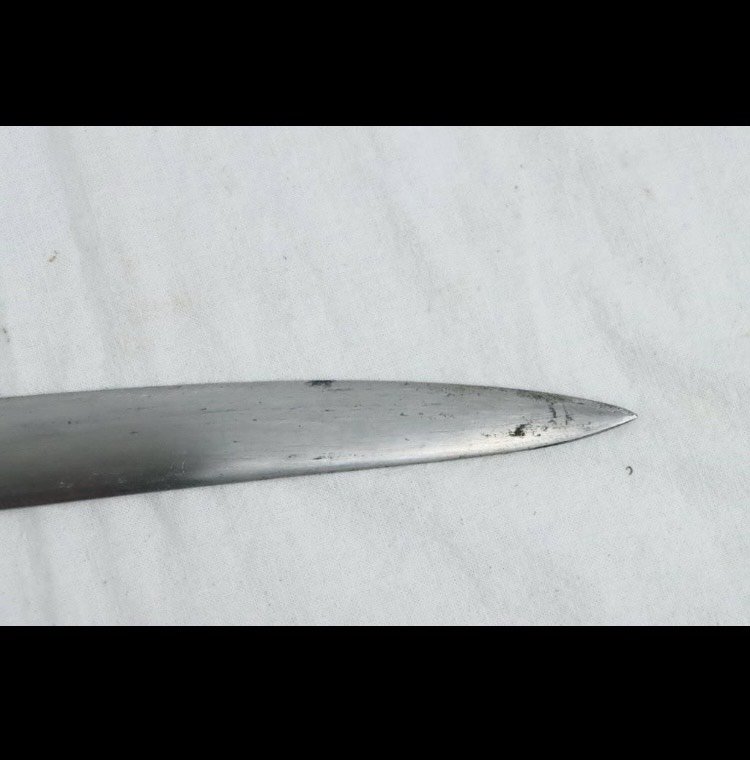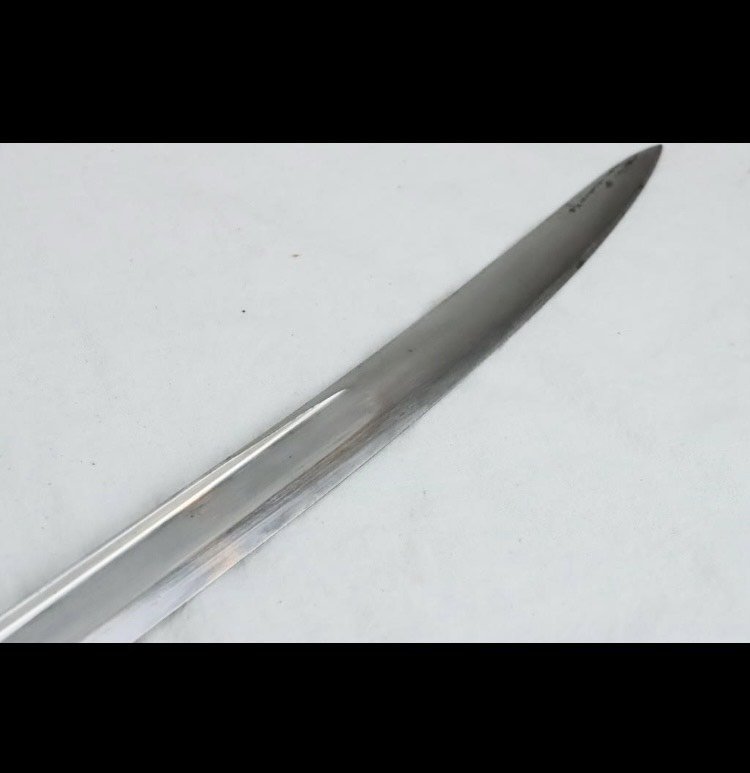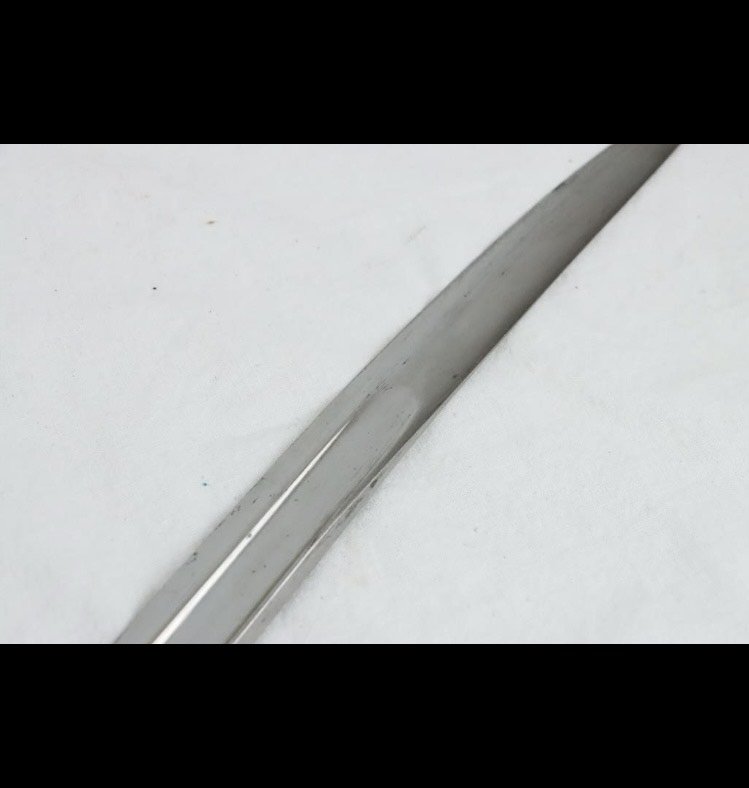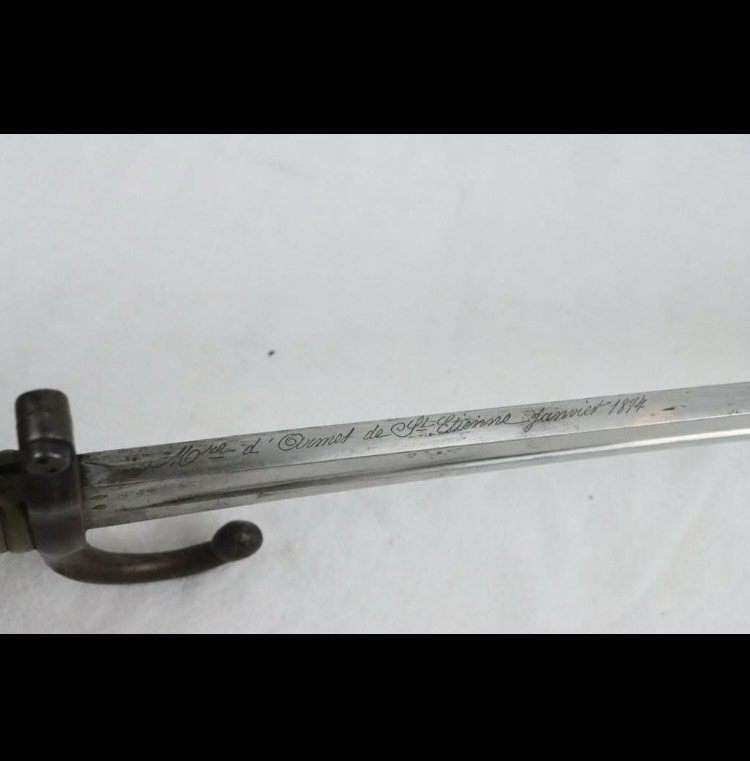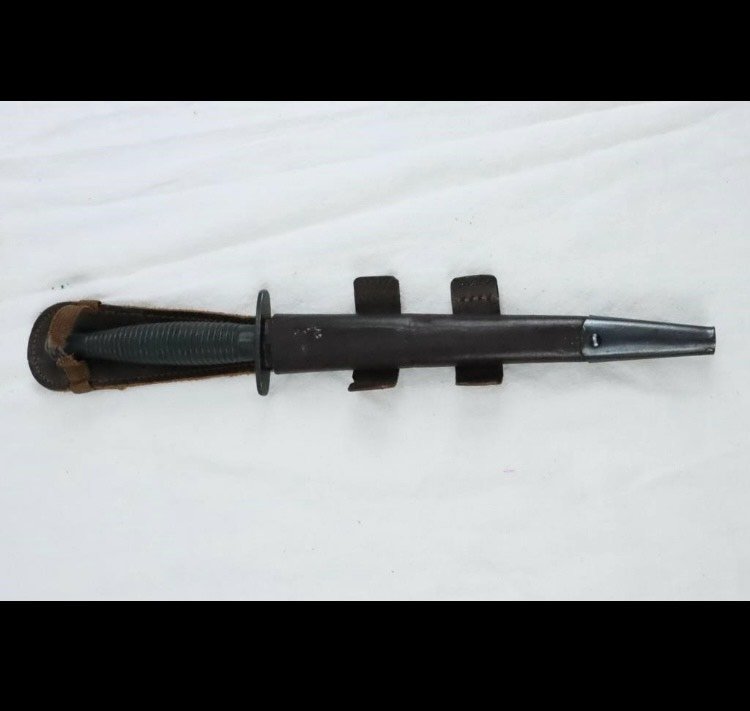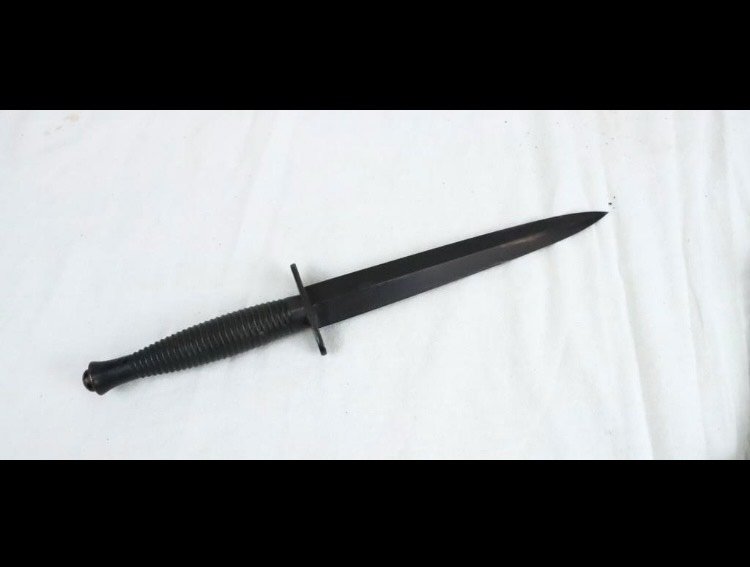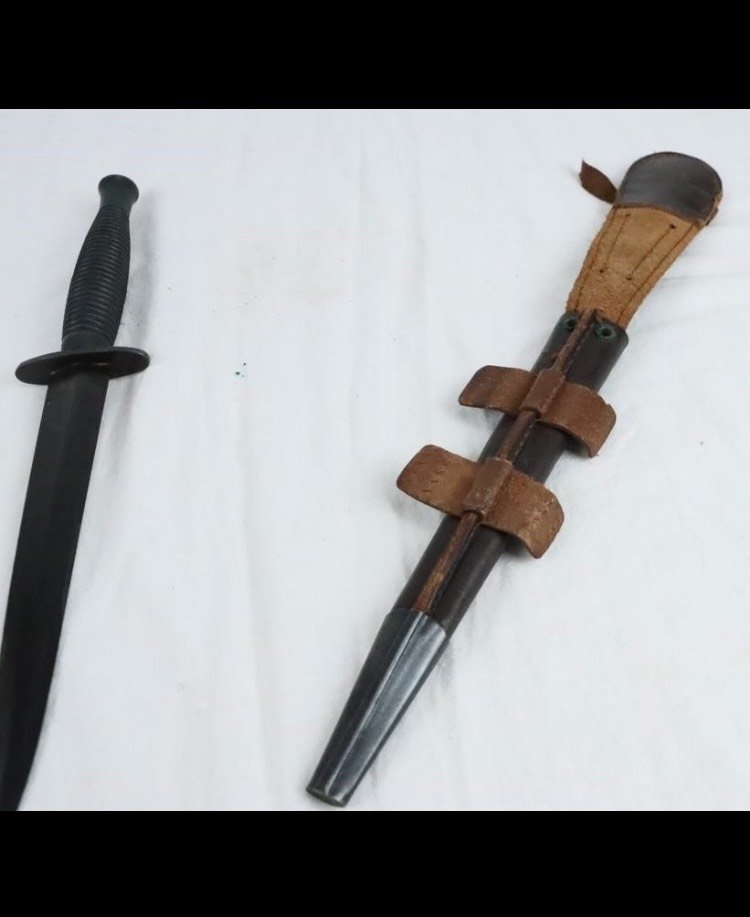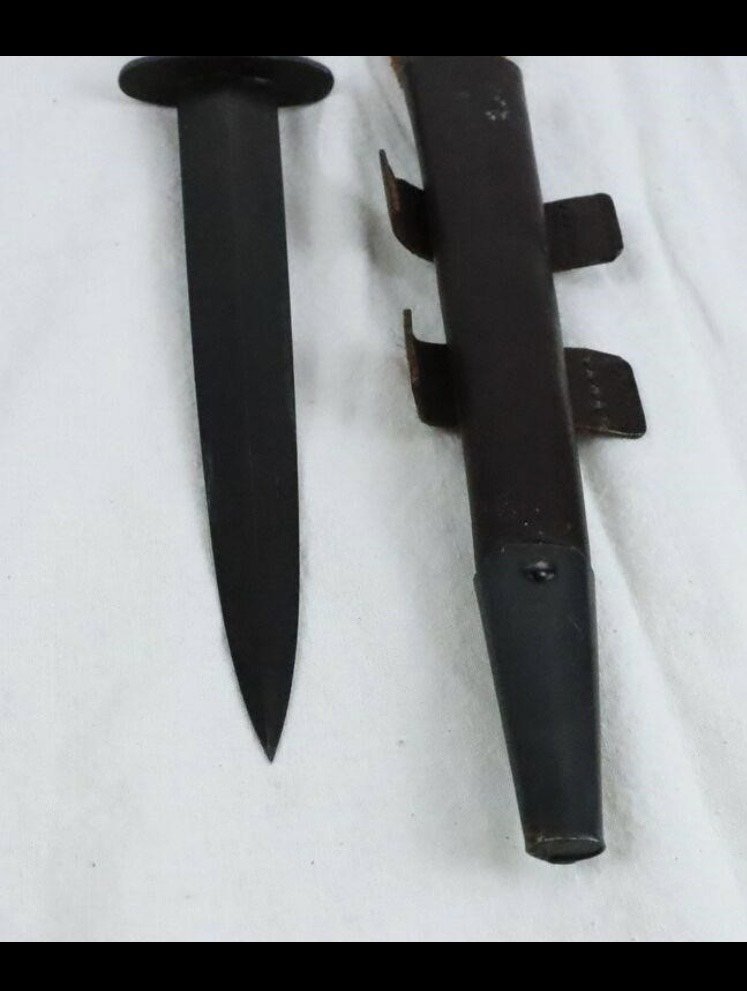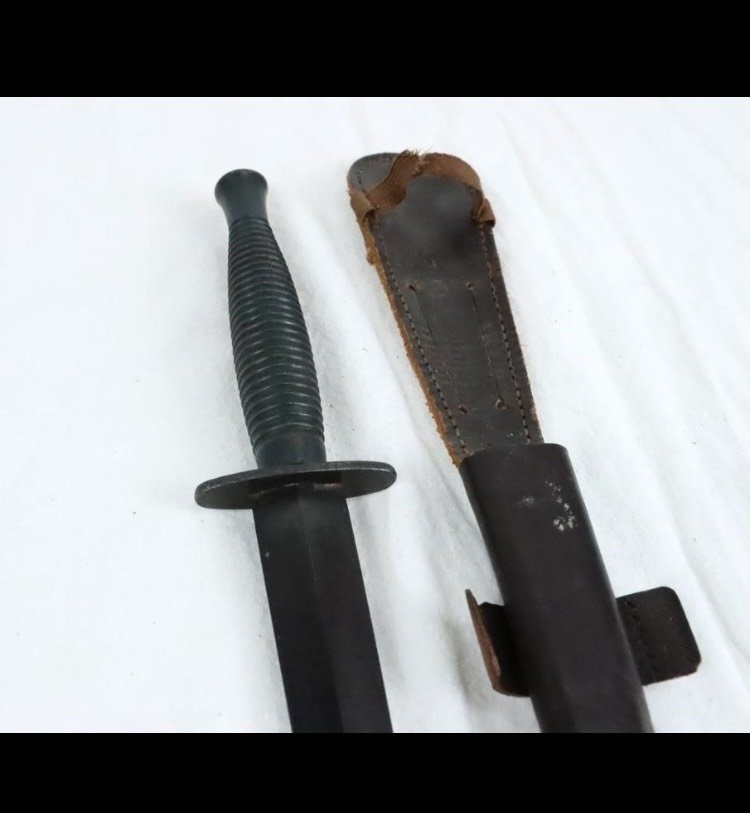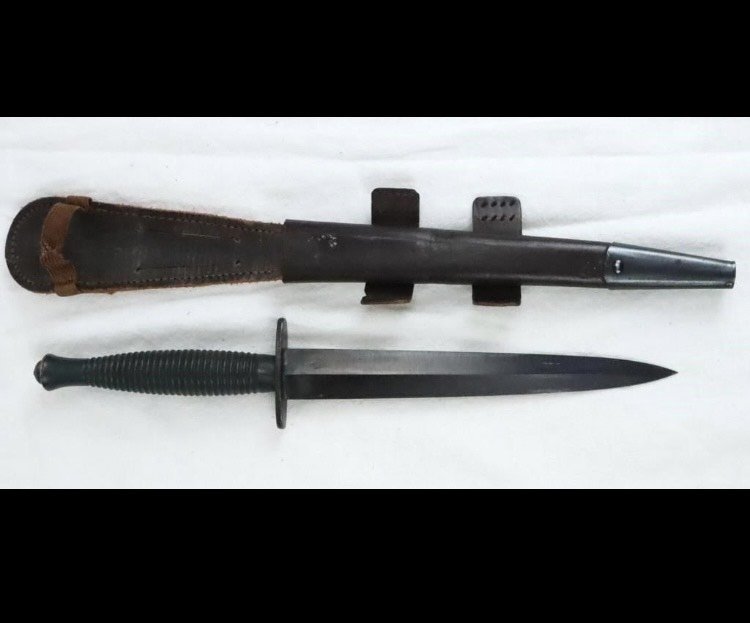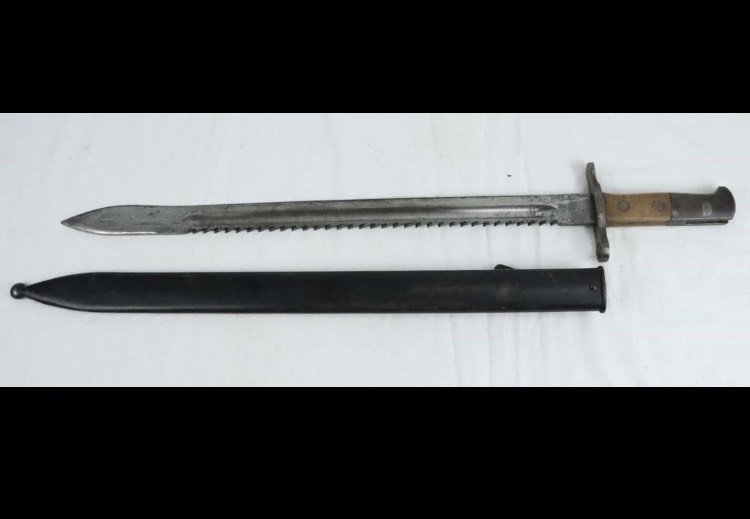 Image 1 of 13
Image 1 of 13

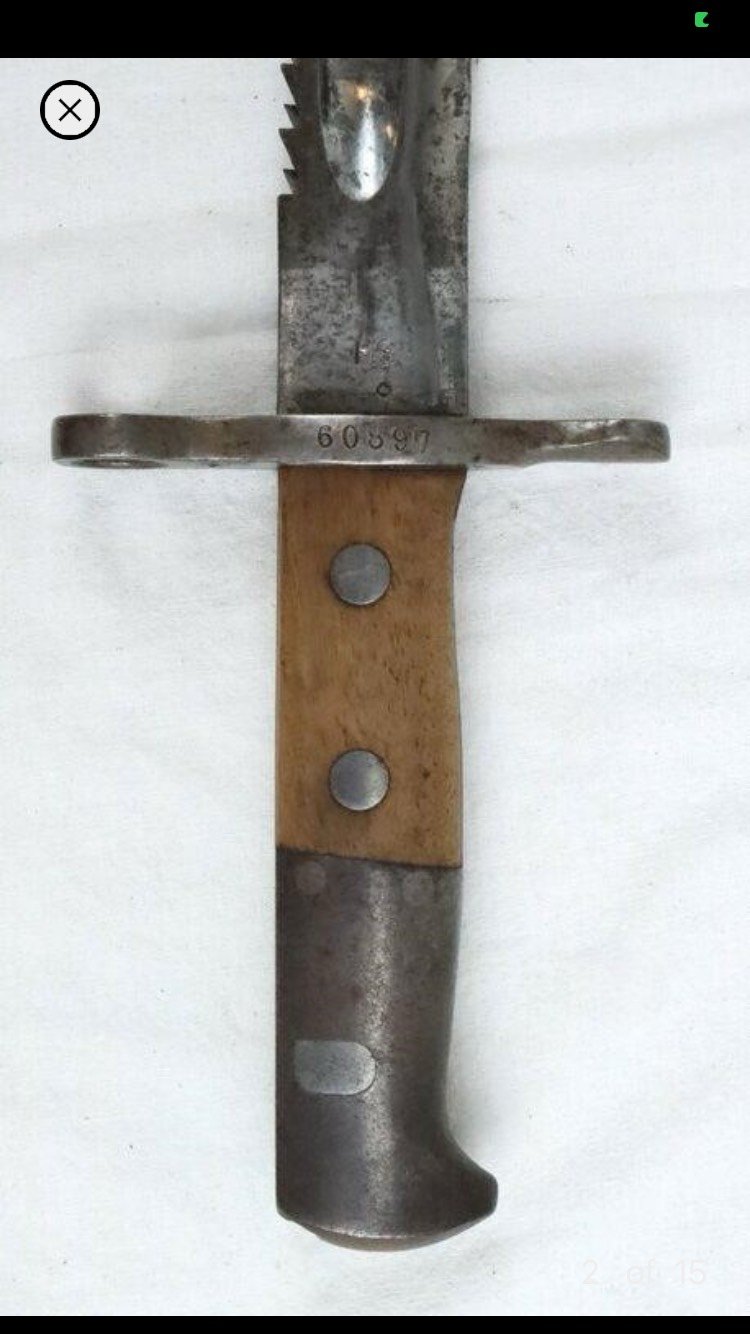 Image 2 of 13
Image 2 of 13

 Image 3 of 13
Image 3 of 13

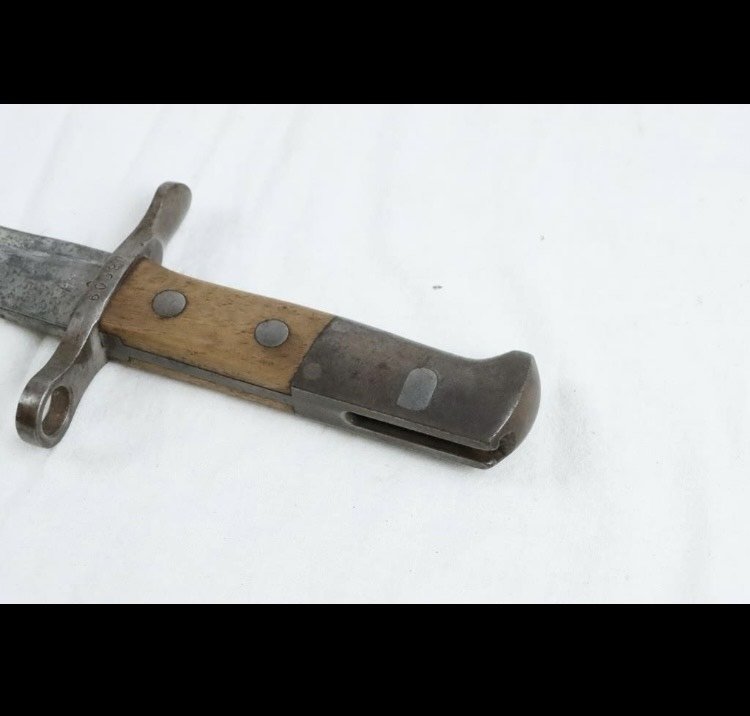 Image 4 of 13
Image 4 of 13

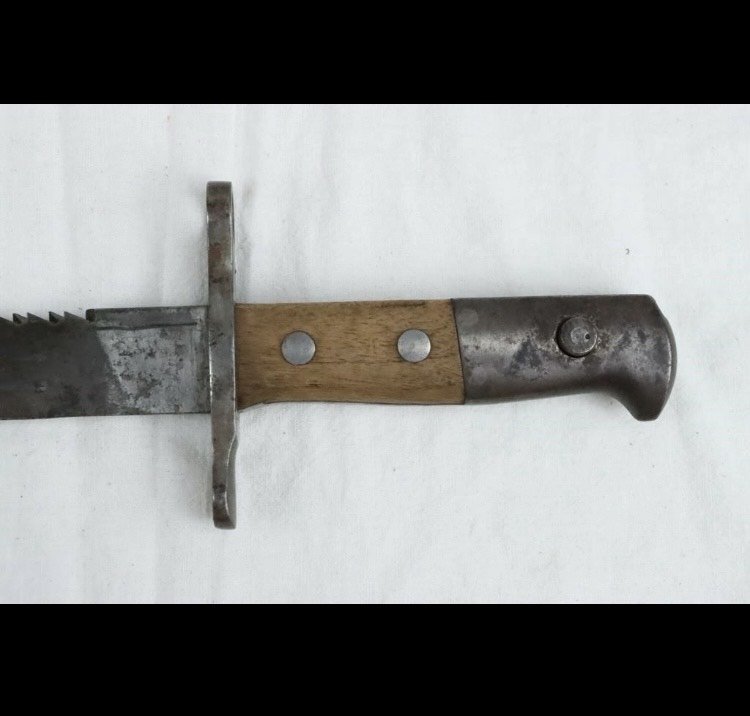 Image 5 of 13
Image 5 of 13

 Image 6 of 13
Image 6 of 13

 Image 7 of 13
Image 7 of 13

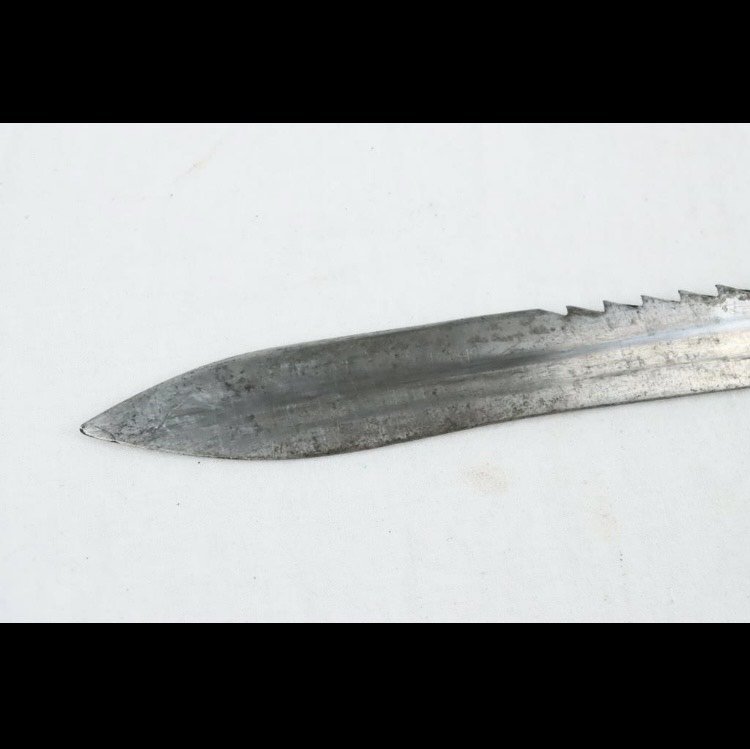 Image 8 of 13
Image 8 of 13

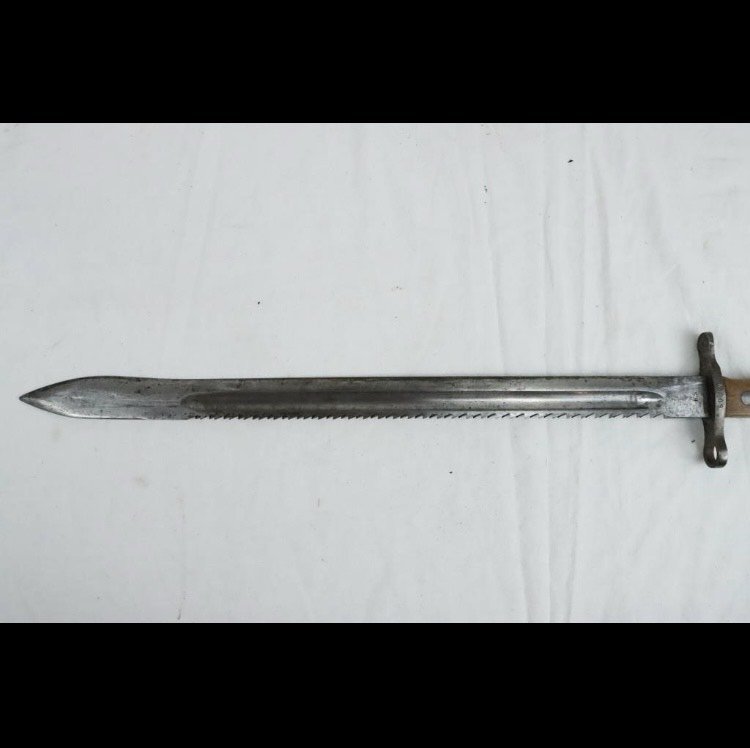 Image 9 of 13
Image 9 of 13

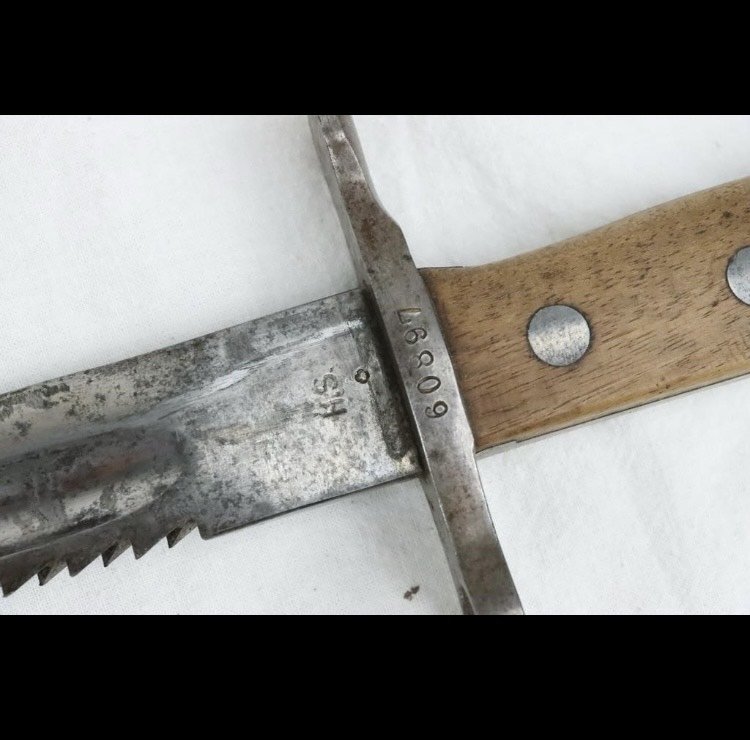 Image 10 of 13
Image 10 of 13

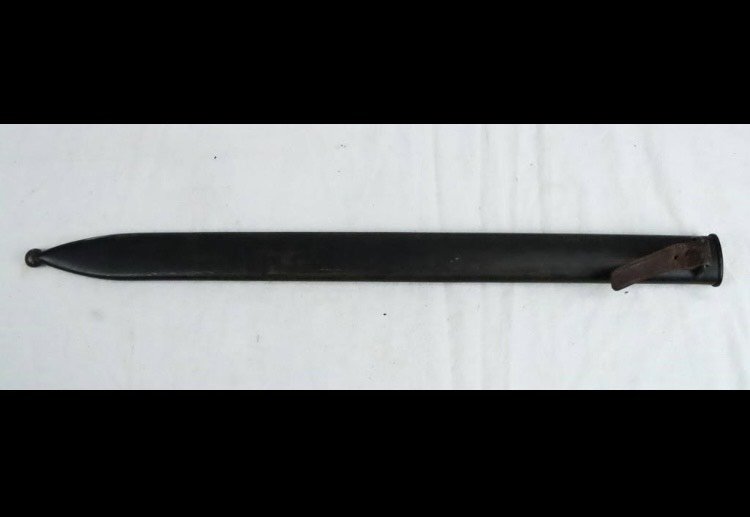 Image 11 of 13
Image 11 of 13

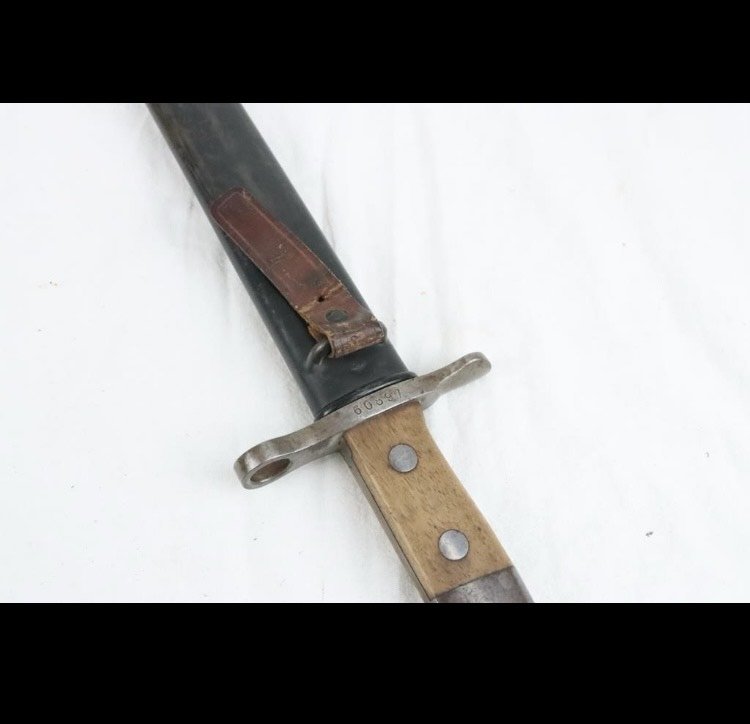 Image 12 of 13
Image 12 of 13

 Image 13 of 13
Image 13 of 13














German WWI Sawback Blade Bayonet
The German WWI Sawback Blade Bayonet is an iconic piece of military history, renowned for its distinctive and formidable design. Used extensively by German forces during the First World War, this bayonet is not only a weapon but also a collectible artifact that offers a tangible connection to the past. The bayonet features a 14-17 inch blade, crafted from high-quality carbon steel, known for its strength and durability. The blade is characterized by its sawback design, where one side of the blade is serrated with aggressive teeth, originally intended for use as a tool to cut through wood and other materials. This dual-purpose design made the bayonet an effective instrument both in combat and for utilitarian tasks in the trenches. The blade's straight edge is razor-sharp, suitable for thrusting and slashing. The sawback edge adds a unique and fearsome look, symbolizing the brutal realities of trench warfare. The blade often bears manufacturing marks and date stamps, indicating its place of origin and production year, adding to its historical authenticity.
The handle of the bayonet is constructed from hardwood, designed to withstand harsh battlefield conditions. It features metal fittings for additional strength and a secure grip. The crossguard includes a muzzle ring, allowing the bayonet to be attached firmly to the rifle, and a hooked quillon for added hand protection. The pommel is made of steel, with a press stud mechanism for easy attachment and detachment from the rifle. The bayonet comes with its original steel scabbard, often painted or blued to prevent rust and reduce glare. The scabbard includes a belt loop, ensuring the bayonet can be securely carried and easily accessed.
The sawback blade bayonet, known in German as the "Sägebajonett," was introduced into military service in the late 19th and early 20th centuries. During World War I, it became a standard issue for various units of the Imperial German Army. The sawback design was intended to enhance the bayonet's versatility, allowing soldiers to use it for both combat and as a field tool. The concept of the sawback bayonet dates back to earlier military campaigns, but it saw significant use during WWI due to the trench warfare environment. Trenches required soldiers to engage in close combat and perform tasks like cutting through wooden obstacles, making the dual-purpose blade highly practical.
Despite its practicality, the sawback bayonet was controversial. Its fearsome appearance and the gruesome wounds it could inflict led to complaints from Allied forces, who viewed it as inhumane. As a result, many sawback bayonets were modified by grinding down the serrated edge, and production of new sawback models was eventually halted. Today, the German WWI Sawback Blade Bayonet is a highly sought-after collector's item. Its unique design, combined with the historical context of its use, makes it a fascinating piece for military history enthusiasts. It stands as a reminder of the brutal realities of trench warfare and the ingenuity of military equipment design during one of the most challenging periods of modern history. Owning this bayonet is not just about possessing a weapon, but about preserving a piece of the past that tells the story of the soldiers who once wielded it.
The German WWI Sawback Blade Bayonet is an iconic piece of military history, renowned for its distinctive and formidable design. Used extensively by German forces during the First World War, this bayonet is not only a weapon but also a collectible artifact that offers a tangible connection to the past. The bayonet features a 14-17 inch blade, crafted from high-quality carbon steel, known for its strength and durability. The blade is characterized by its sawback design, where one side of the blade is serrated with aggressive teeth, originally intended for use as a tool to cut through wood and other materials. This dual-purpose design made the bayonet an effective instrument both in combat and for utilitarian tasks in the trenches. The blade's straight edge is razor-sharp, suitable for thrusting and slashing. The sawback edge adds a unique and fearsome look, symbolizing the brutal realities of trench warfare. The blade often bears manufacturing marks and date stamps, indicating its place of origin and production year, adding to its historical authenticity.
The handle of the bayonet is constructed from hardwood, designed to withstand harsh battlefield conditions. It features metal fittings for additional strength and a secure grip. The crossguard includes a muzzle ring, allowing the bayonet to be attached firmly to the rifle, and a hooked quillon for added hand protection. The pommel is made of steel, with a press stud mechanism for easy attachment and detachment from the rifle. The bayonet comes with its original steel scabbard, often painted or blued to prevent rust and reduce glare. The scabbard includes a belt loop, ensuring the bayonet can be securely carried and easily accessed.
The sawback blade bayonet, known in German as the "Sägebajonett," was introduced into military service in the late 19th and early 20th centuries. During World War I, it became a standard issue for various units of the Imperial German Army. The sawback design was intended to enhance the bayonet's versatility, allowing soldiers to use it for both combat and as a field tool. The concept of the sawback bayonet dates back to earlier military campaigns, but it saw significant use during WWI due to the trench warfare environment. Trenches required soldiers to engage in close combat and perform tasks like cutting through wooden obstacles, making the dual-purpose blade highly practical.
Despite its practicality, the sawback bayonet was controversial. Its fearsome appearance and the gruesome wounds it could inflict led to complaints from Allied forces, who viewed it as inhumane. As a result, many sawback bayonets were modified by grinding down the serrated edge, and production of new sawback models was eventually halted. Today, the German WWI Sawback Blade Bayonet is a highly sought-after collector's item. Its unique design, combined with the historical context of its use, makes it a fascinating piece for military history enthusiasts. It stands as a reminder of the brutal realities of trench warfare and the ingenuity of military equipment design during one of the most challenging periods of modern history. Owning this bayonet is not just about possessing a weapon, but about preserving a piece of the past that tells the story of the soldiers who once wielded it.
The German WWI Sawback Blade Bayonet is an iconic piece of military history, renowned for its distinctive and formidable design. Used extensively by German forces during the First World War, this bayonet is not only a weapon but also a collectible artifact that offers a tangible connection to the past. The bayonet features a 14-17 inch blade, crafted from high-quality carbon steel, known for its strength and durability. The blade is characterized by its sawback design, where one side of the blade is serrated with aggressive teeth, originally intended for use as a tool to cut through wood and other materials. This dual-purpose design made the bayonet an effective instrument both in combat and for utilitarian tasks in the trenches. The blade's straight edge is razor-sharp, suitable for thrusting and slashing. The sawback edge adds a unique and fearsome look, symbolizing the brutal realities of trench warfare. The blade often bears manufacturing marks and date stamps, indicating its place of origin and production year, adding to its historical authenticity.
The handle of the bayonet is constructed from hardwood, designed to withstand harsh battlefield conditions. It features metal fittings for additional strength and a secure grip. The crossguard includes a muzzle ring, allowing the bayonet to be attached firmly to the rifle, and a hooked quillon for added hand protection. The pommel is made of steel, with a press stud mechanism for easy attachment and detachment from the rifle. The bayonet comes with its original steel scabbard, often painted or blued to prevent rust and reduce glare. The scabbard includes a belt loop, ensuring the bayonet can be securely carried and easily accessed.
The sawback blade bayonet, known in German as the "Sägebajonett," was introduced into military service in the late 19th and early 20th centuries. During World War I, it became a standard issue for various units of the Imperial German Army. The sawback design was intended to enhance the bayonet's versatility, allowing soldiers to use it for both combat and as a field tool. The concept of the sawback bayonet dates back to earlier military campaigns, but it saw significant use during WWI due to the trench warfare environment. Trenches required soldiers to engage in close combat and perform tasks like cutting through wooden obstacles, making the dual-purpose blade highly practical.
Despite its practicality, the sawback bayonet was controversial. Its fearsome appearance and the gruesome wounds it could inflict led to complaints from Allied forces, who viewed it as inhumane. As a result, many sawback bayonets were modified by grinding down the serrated edge, and production of new sawback models was eventually halted. Today, the German WWI Sawback Blade Bayonet is a highly sought-after collector's item. Its unique design, combined with the historical context of its use, makes it a fascinating piece for military history enthusiasts. It stands as a reminder of the brutal realities of trench warfare and the ingenuity of military equipment design during one of the most challenging periods of modern history. Owning this bayonet is not just about possessing a weapon, but about preserving a piece of the past that tells the story of the soldiers who once wielded it.
Category: Knives/Blades
Country of Origin: Germany
Maker: Possibly Mauser weapons factory
Markings: 60897/H.S.
In House Collection: 1 of 1
Condition: F
Condition Additional Notes: Wear as shown
Material: Blade is high-quality carbon steel, the handle is constructed from hardwood, the pommel is made of steel and the scabbard is made of steel with a leather loop.
Age: 1905-1917
Size: 25.25" long with the scabbard

